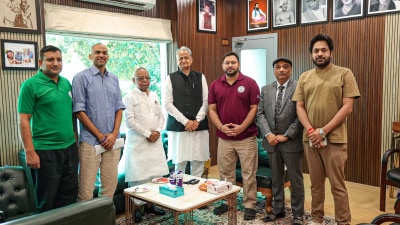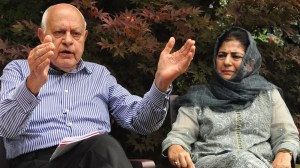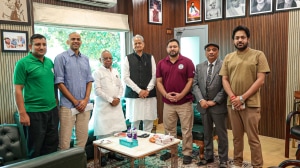The A,B,C of financial literacy
Let me begin with a confession. I am inordinately fond of How to... kind of books. And with good reason. For many of the skills that I have wanted to learn as an adult....
Let me begin with a confession. I am inordinately fond of How to… kind of books. And with good reason. For many of the skills that I have wanted to learn as an adult good writing,public speaking,stock investing a skilled instructor was rarely available at hand. On the other hand,a visit to one of Connaught Place or South Extensions renowned bookstores usually yielded a world-class book on even the most esoteric of subjects. Now I am the father of a six-year-old. So when a book (The art and science of teaching children about money) purporting to instruct parents on how to impart financial literacy to their children arrived in the mail,I was glad to read and review it.
The author,Amar Pandit,is a Mumbai-based financial planner. A number of Delhis journalists writing on personal finance owe Pandit a debt of gratitude. When the deadline looms and the subject you are writing on is particularly knotty,he is one resource person that we have turned to often for assistance. But besides the personal debt we owe him,a more compelling reason for reviewing his book is the importance of the subject he has tackled.
Keep what you earn
As India grows more affluent,the challenge,says Pandit,will lie not so much in earning money a relatively easy task in a fast-growing economy as in keeping it. Old-fashioned values like thrift and saving are likely to be swept under the carpet as consumerist impulses overpower the young. Debt,a mark of shame for our parents,is likely to be more readily embraced by our childrens generation which will be loath to delay gratification. So it is important that you drill the value of thrift in your children when they are still at an impressionable age.
Train diligently
In some ways,however,we will also have to behave differently from our parents when it comes to imparting financial literacy to our children. In our parents household,money was a taboo subject or at least an overt interest in its acquisition was deemed to be in poor taste. Our generation can not afford to take our parents hands-off attitude in the matter of financial training. Just as I plan to to give my son a headstart in life by passing on to him some of the other skills I have learnt the hard way skills such as writing or thinking (the former courtesy Strunk and White and the latter courtesy Edward de Bonos books) I am also going to try and pass on to him every trick in the game of personal finance that I have learnt.
Besides,typical middle-class platitudes,Money is not important or Money is not everything dont reflect the whole truth. After all most of our waking hours are spent trying to earn enough so that we can give our children the best of education and save enough for our own retirement. Then why not pass on any financial skills that we possess with as much assiduity as we bring to the teaching of the three Rs?
A more complex world
By the time our children come of age,the universe of financial products will be much bigger and infinitely more complex. The world of bank fixed deposits and post office schemes will appear to them like the Model T age of finance. But as recent experience in the US demonstrates,greater complexity in financial products is not necessarily in the consumers interest. Will our children be smart enough to know that it is the financial industrys job to manufacture products,not ours to buy them all? Will they realise that the products which the financial services industry pushes at us with the greatest persistence are the ones that yield the highest commissions for agents and distributors,not the ones that are best for us?
Twenty years from now,new channels will have come into operation. My father,otherwise very savvy about banking,has a difficult time operating an ATM. The very thought of transferring money over the Internet fills him with horror. Unless our children are initiated to these new channels at an early age,they will never be comfortable operating them in their adulthood.
Knowledge tames risk
To our parents generation,the stock market is akin to a gambling den rather than a legitimate channel of wealth creation. But can you,or your children,hope to beat inflation and create substantial wealth without investing in equity-based products? Risk is inversely correlated with knowledge and experience. A skilled tightrope walker walks the rope strung between two skyscrapers without missing a beat. Dr Naresh Trehan,one of Indias most famous heart surgeons,operates on the bodys most important organ without losing either his appetite or his nights sleep. You too need to initiate your children to equity investing from an early age,ensuring that they do so in a well-informed way after imbibing time-tested principles from investment classics.
The celebrated economist John Kenneth Galbraith once said: Wealth is not without its advantages,and the case to the contrary,although it has often been made,has never proved widely persuasive. By all means,rear your children to become poets,painters,and artistes. But if you want them to pursue their vocations in relative comfort,pick up Pandits book that has detailed,step-by-step instructions for every age,and start inoculating your child with little well-timed doses of financial literacy. It is one of the most powerful gifts you can make to your precious one. u





- 01
- 02
- 03
- 04
- 05


























